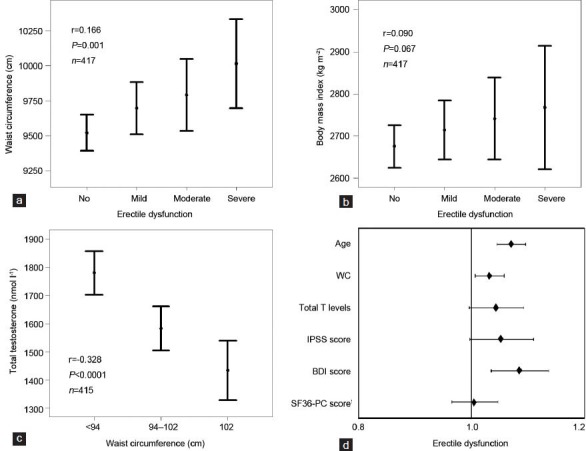Figure 1.

Relationship between erectile dysfunction (ED) severity and waist circumference (WC; a) or body mass index (b). (c) Relationship between total testosterone (TT; mass spectrometry measured) levels and WC classes.10(d) Smoking adjusted risk for any form of ED (expressed as a dummy variable yes/ no) as a function of several other putative determinants of penile erection including total T levels, low urinary tract symptoms as expressed by International Prostate Symptom Score (IPSS), depressive symptoms as detected by Beck Depression Inventory (BDI) score and quality of life as measured by Short Form 36 (SF-36) health survey physical component (PC). Data (unpublished) are derived from the European Male Aging Study (EMAS) when only the Florentine Centre was considered (n = 433 mean age 60.1 ± 10.9 years).20 The presence of ED was investigated with question #10 (You are: 1) Always able to keep an erection which would be good enough for sexual intercourse (no ED); 2) Usually able to get and keep an erection which would be good enough for sexual intercourse (mild ED); 3) Sometimes able to get and keep an erection which would be good enough for sexual intercourse (moderate ED); 4) Never able to get and keep an erection which would be good enough for sexual intercourse (severe ED) of the EMAS sexual function questionnaire (SFQ).25 Note that WC was considered as a continuous variable in all the analyses.
